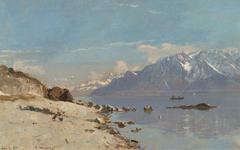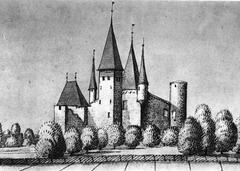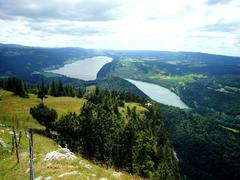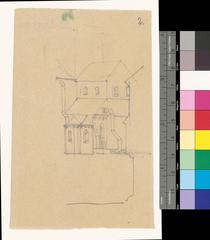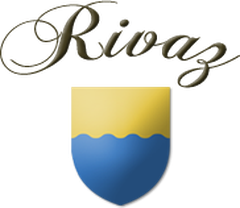Pully, Canton Vaud, Switzerland: Visiting Hours, Tickets, and Tourist Guide
Date: 14/06/2025
Introduction to Pully’s Heritage and Visitor Information
Nestled on the northern shores of Lake Geneva, Pully is a captivating town in the Canton of Vaud, Switzerland, where a rich historical legacy meets scenic natural beauty and vibrant cultural life. With origins dating back to prehistoric times and a significant Roman presence—exemplified by the Villa Romaine de Pully—this lakeside community offers visitors a unique window into Switzerland’s diverse past. From Neolithic settlements and Roman villas with intricate mosaics to medieval ecclesiastical architecture like the Église Saint-Maurice, Pully’s historical layers are tangible throughout the town.
Over the centuries, Pully evolved through feudal influences, Bernese rule during the Reformation, and its integration into the Canton of Vaud, transforming from a rural village into a thriving modern suburb. Today, visitors can explore a variety of historical landmarks, including the Château de Pully—a medieval fortified residence now serving cultural functions—and the Maison Pulliérane, which offers insights into traditional Vaudois rural life.
Pully is also renowned for its vibrant festivals, such as the Pully-Lavaux Jazz Festival, and its cultural institutions that celebrate both local traditions and multicultural influences. The town’s lakeside promenades and parks provide stunning vistas across Lake Geneva to the Alps, making it a perfect destination for both leisure and exploration.
This guide provides essential information on visiting hours, ticketing, accessibility, and travel tips, ensuring a memorable and seamless experience in Pully. Whether you’re a history enthusiast, culture seeker, or nature lover, Pully promises an enriching visit with its harmonious blend of heritage and modern charm. For more, see the Ville de Pully – Villa Romaine, Pully Tourisme – Église Saint-Maurice, and the official Pully tourism website.
Contents Overview
- Early Origins and Roman Heritage
- Medieval Development and Feudal Influence
- Integration into the Canton of Vaud
- Urbanization and Modern Growth
- Cultural Significance and Community Life
- Festivals and Events
- Museums and Historic Buildings
- Key Historical Landmarks
- Villa Romaine de Pully
- Église Saint-Maurice
- Château de Pully
- Maison Pulliérane
- Lakeside Promenade and Parc de la Plage
- Visitor Information
- Visiting Hours and Tickets
- Accessibility
- Travel Tips
- Frequently Asked Questions (FAQ)
- Visuals and Media Recommendations
- Internal Linking Suggestions
- Conclusion and Call to Action
Discover Pully: Historical Sites, Visiting Hours, Tickets, and Cultural Highlights
Early Origins and Roman Heritage
Pully’s story begins in the Neolithic period, with archaeological finds indicating early settlements and burial sites. The most significant phase of early development occurred under Roman rule; by the 1st century CE, Pully was integrated into the Roman Empire as part of the province of Helvetia. The Villa Romaine de Pully, with its elaborate mosaics, hypocaust heating, and agricultural buildings, is one of Switzerland’s best-preserved Roman sites and can be explored today (Ville de Pully – Villa Romaine).
Medieval Development and Feudal Influence
After the collapse of Roman authority, Pully became part of the Kingdom of Burgundy and later the Holy Roman Empire. During the Middle Ages, the area was a patchwork of feudal holdings, with the Bishopric of Lausanne wielding considerable influence. The medieval village developed around its church, first recorded in the 10th century. The Église Saint-Maurice, with Romanesque foundations and Gothic and Baroque renovations, remains a testament to this era (Pully Tourisme – Église Saint-Maurice).
Integration into the Canton of Vaud
Major political changes came with the Bernese conquest in 1536. Pully and the Pays de Vaud became part of the Bernese bailiwick, introducing Protestantism and new administrative structures. After the Helvetic Republic and the Act of Mediation in 1803, Pully joined the newly formed Canton of Vaud, entering a period of modernization, including the construction of new roads, railways, and public infrastructure (Vaud Official History).
Urbanization and Modern Growth
The arrival of the Lausanne–Simplon railway in the 19th century transformed Pully into a desirable suburb for Lausanne and Geneva. The population grew, and new residential and public buildings were developed. The lakeside promenades and parks became a focus for leisure and community, while careful urban planning ensured the preservation of green spaces and historic sites.
Cultural Significance and Community Life
Pully boasts a dynamic cultural scene, hosting festivals, concerts, and exhibitions year-round. The Pully-Lavaux à l’Heure du Jazz festival draws international talent (Pully-Lavaux Jazz Festival). Historic venues like the Ancienne Maison de Commune and Théâtre de l’Octogone host diverse arts events. The Maison Pulliérane, a museum and cultural center, displays artifacts from Pully’s rural past.
Key Historical Landmarks
Villa Romaine de Pully
This Roman villa site offers visitors a close-up look at ancient mosaics, baths, and daily Roman life through guided tours and interactive exhibits (Ville de Pully – Villa Romaine).
Église Saint-Maurice
Dating to the 10th century, this church features Romanesque, Gothic, and Baroque architecture, reflecting Pully’s religious and communal continuity (Pully Tourisme – Église Saint-Maurice).
Château de Pully
Originally a medieval fortified house, the château has been expanded over centuries. It now houses municipal offices and hosts cultural events (Château de Pully).
Maison Pulliérane
A house museum offering insights into Vaudois rural life, with period furnishings and displays illustrating Pully’s evolution (Maison Pulliérane).
Lakeside Promenade and Parc de la Plage
These modern public spaces offer panoramic lake and mountain views, as well as venues for relaxation, events, and community gatherings.
Visitor Information: Visiting Hours, Tickets, and Accessibility
Villa Romaine de Pully
- Hours: Tuesday–Sunday, 10:00–17:00; closed Mondays
- Tickets: CHF 8 for adults; reduced rates for students/seniors
- Accessibility: Limited wheelchair access; assistance available
Église Saint-Maurice
- Hours: Daily 9:00–18:00
- Admission: Free
- Accessibility: Fully accessible
Château de Pully
- Hours: Open during events; check official site
- Admission: Varies by event
- Accessibility: Accessible with prior arrangement
Maison Pulliérane
- Hours: Wednesday–Sunday, 14:00–18:00
- Tickets: CHF 5 for adults; free for children under 16
- Accessibility: Partial due to historic structure
Lakeside Promenade and Parc de la Plage
- Open 24/7, year-round
- Admission: Free
- Accessibility: Fully accessible
Travel Tips:
Pully is easily accessed from Lausanne via train or bus (10-minute ride). Scenic walking and cycling routes along Lake Geneva are also available.
Frequently Asked Questions (FAQ)
Q: What are the typical visiting hours for Pully’s historic sites?
A: Most sites are open from mid-morning to late afternoon, with closures on Monday or Tuesday. Église Saint-Maurice is open daily.
Q: Are guided tours available?
A: Yes, Villa Romaine and Maison Pulliérane offer guided tours. Advance booking is recommended.
Q: Is photography permitted?
A: Generally yes, though flash may be restricted in some areas.
Q: How can I purchase tickets?
A: Online via official websites or onsite at entrances.
Q: How do I reach Pully from Lausanne?
A: By train or bus, with frequent 10-minute connections.
Q: What about accessibility?
A: Église Saint-Maurice and the lakeside promenade are fully accessible. Villa Romaine and Maison Pulliérane have partial access; contact sites for details.
Visuals and Interactive Media Recommendations
Incorporate high-quality images with descriptive alt tags, such as “Villa Romaine de Pully mosaics” or “Lakeside Promenade in Pully.” Interactive maps showing historical site locations and virtual tours (if available) are recommended for a richer visitor experience.
Internal Linking Suggestions
Enhance content by linking to related topics, such as [Top Historical Sites in Vaud], [Visiting Lake Geneva], and [Swiss Roman Villas].
Visiting the Château de Pully: A Historic Landmark
Overview
Château de Pully, dating from the 14th century, is a regional landmark on Lake Geneva’s shore. Over time it has served as a noble residence and cultural hub, connecting Pully’s medieval heritage with contemporary community life.
Visiting Hours and Tickets
- Open Tuesday–Sunday, 10:00–18:00 (last entry 17:30); closed Mondays/public holidays
- Tickets: CHF 8 adults, CHF 5 reduced, free for children under 12
- Guided tours: Weekends and public holidays at 11:00 and 15:00; book online or at the ticket office
Getting There
- Regional trains and buses from Lausanne to Pully (10-minute walk to château)
- Car parking and cycling routes available
Nearby Attractions
- Lavaux vineyards (UNESCO World Heritage Site)
- Lakeshore promenade, parks, and cafés
- Museums and cultural venues in Pully and Lausanne
Accessibility
- Wheelchair access at main entrance and key areas
- Staff assistance and accessible restrooms available
Special Events
Château de Pully hosts medieval fairs, art exhibitions, and wine tastings linked to the Lavaux vineyards. Check the events calendar online.
Visitor Tips
- Arrive early to avoid crowds
- Wear sturdy shoes for historic surfaces
- Photography allowed (no flash)
- Combine your visit with a vineyard tour
FAQ
Q: Is the château suitable for children?
A: Yes, family-friendly tours and activities are available.
Q: Can I buy tickets online?
A: Yes, via the official tourism website.
Q: Are pets allowed?
A: Only service animals.
Q: Is there a café?
A: Not on-site, but there are lakeshore cafés nearby.
Q: What languages are tours in?
A: French, English, and occasionally German.
For more, see the official Pully tourism website and Lavaux UNESCO.
Cultural Significance
Heritage and Identity
Pully’s heritage extends from Neolithic times (Pierra-Portray cemetery, Chamblandes tombs) through the Roman era and Middle Ages (Wikipedia). The town’s urban village is listed in the Inventory of Swiss Heritage Sites. Landmarks such as the Church of St. Sulpice, Pully Castle, and Le Prieuré reflect its historic depth (Swiss Glorious).
Arts and Institutions
The town supports cultural initiatives with exhibitions, concerts, and workshops (Pully Official). Proximity to Lausanne enhances access to museums and festivals while Pully retains its distinct tradition.
Festivals and Events
Annual events include the “Vide-greniers Pully - Paudex - Belmont” and “Marché féerique,” alongside guided tours and local gatherings (Pully Official). Lausanne and the Montreux Jazz Festival further augment the cultural calendar (MySwitzerland).
Multiculturalism
With over 27% foreign nationals (Wikipedia), Pully is multicultural, reflected in its multilingual population, international schools, and diverse cuisine (Swiss Glorious).
Economic Significance
Economic Structure
Pully thrives on its lakeside location and proximity to Lausanne and Geneva. The tertiary sector (services, hospitality, education) dominates, though agriculture and viticulture remain (Wikipedia). Local employment is robust (Swiss Glorious).
Innovation and Growth
Pully benefits from Vaud’s dynamic economic ecosystem, home to companies like Logitech and Nespresso (Invest Vaud). Sustainability and innovation are priorities, as underscored by initiatives like the Competence Center for Sustainability in Construction.
Tourism and Hospitality
Tourism is central, with visitors drawn to lakeside beauty, historic sites, and the Lavaux vineyards (Swiss Glorious; Vaud Tourism). Hospitality emphasizes sustainable tourism.
Outlook
Vaud’s 2025 outlook is positive, with sustainable growth ensuring Pully’s continued prosperity (Vaud News).
Visitor Information Recap
- Pully Castle: Weekends and by appointment; free entry; guided tours at a small fee
- Church of St. Sulpice: Daily, 9:00–18:00; donations welcome
- Le Prieuré: Special events or by arrangement
- Access: By train or bus from Lausanne/Geneva; most sites and promenades are wheelchair-accessible
Summary and Visitor Tips
Pully is a remarkable destination where history, culture, and natural beauty converge. Its Roman villa, medieval churches, and historic château offer immersive experiences, while festivals and museums provide cultural richness. Accessibility, clear visiting hours, and sustainable tourism make Pully ideal for all travelers. Nearby Lavaux vineyards and Lausanne broaden your options.
Take advantage of guided tours and local events for a deeper appreciation. Download the Audiala app and follow Pully’s official channels for the latest updates.
References and Official Links
- Ville de Pully – Villa Romaine
- Pully Tourisme – Église Saint-Maurice
- Château de Pully Official Information
- Official Pully Tourism Website
- Lavaux UNESCO World Heritage Site
- Swiss Glorious – Pully Overview
- MySwitzerland Events and Festivals
- Invest Vaud – Regional Economic Information
- Vaud Official History
- Vaud Tourism – Economy and Sustainable Tourism
- Vaud News – Economic Outlook 2025
For a richer experience, include images and maps with alt text such as “Pully historical sites” and “Pully visiting hours.”





